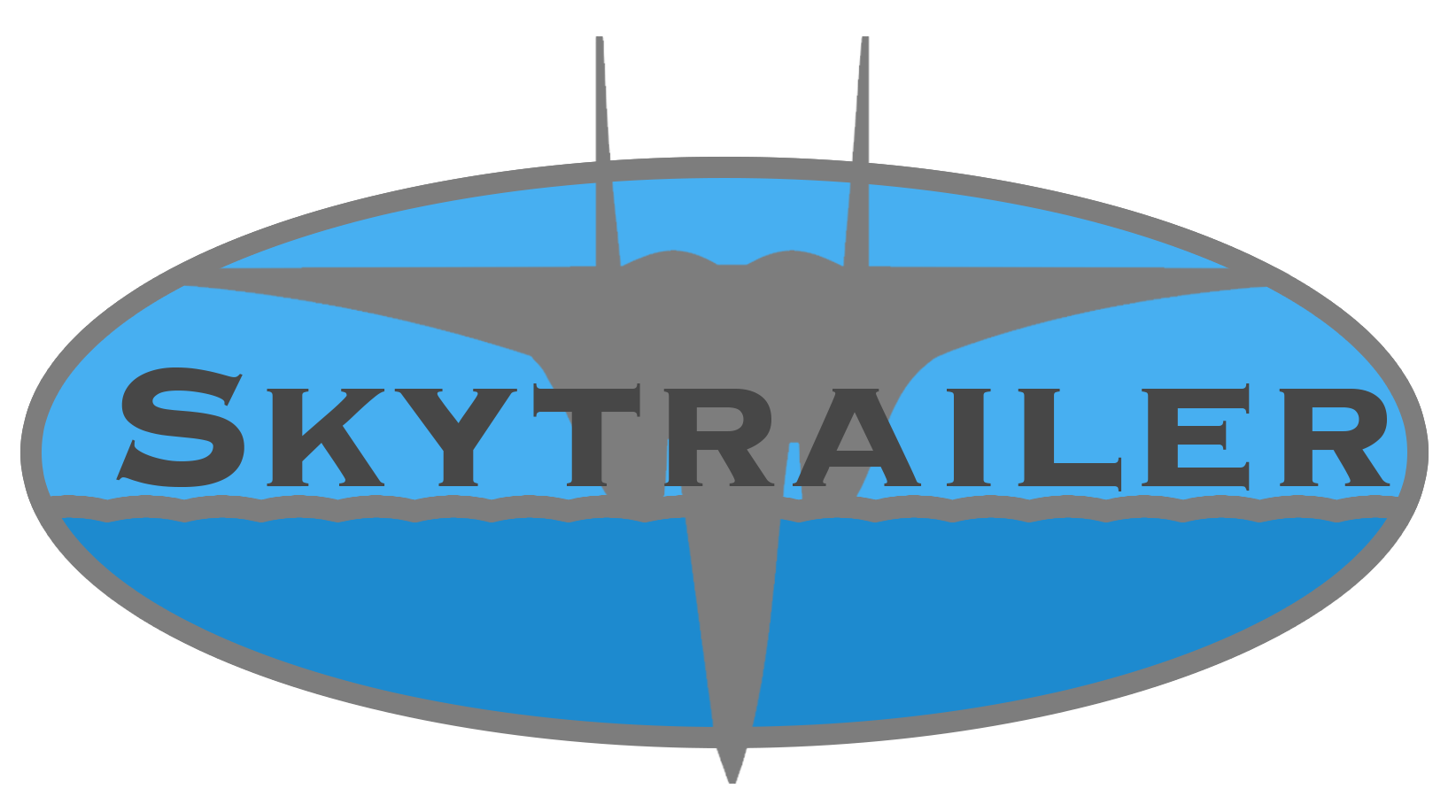On this page you can keep following the latest info on the F-15EX development.
In 2018, discussions between the United States Air Force (USAF) and Boeing centered around the F-15X, also known as the Advanced F-15. This proposed single-seat variant, based on the F-15QA, aimed to replace the USAF’s aging F-15C/D fleet. Notable enhancements included the introduction of the AMBER (Advanced Missile and Bomb Ejector Rack) system, enabling the carriage of up to 22 air-to-air missiles. Other improvements comprised infrared search and track capabilities, advanced avionics and electronic warfare equipment, an AESA radar system, and a revised structure designed for a service life of 20,000 hours. Two variants were proposed: the single-seat F-15CX and the two-seat F-15EX, both boasting identical capabilities. The USAF opted for the two-seat variant, capable of being operated by either a single pilot or a pilot and Weapons Systems Officer (WSO) for more complex missions and potential control of collaborative combat aircraft. This decision was influenced, in part, by the fact that only two-seat F-15 models remained in production.
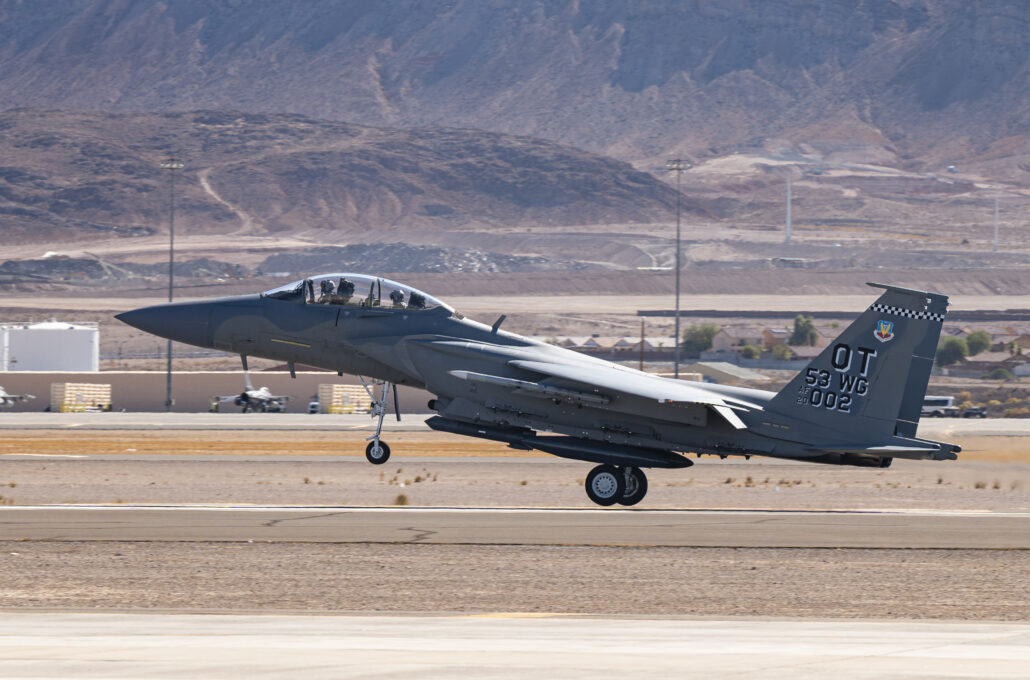
The procurement of the F-15EX by the USAF served the purpose of maintaining fleet size, especially with the cessation of F-22 production, delays in the F-35 program, and the aging of existing F-15s. While projections suggested that the F-15EX might face challenges against modern air defenses by 2028, its role was envisioned in homeland and airbase defense, enforcing no-fly zones against limited air defenses, and deploying standoff weapons. In July 2020, the U.S. Defense Department initiated the acquisition of eight F-15EXs over three years at a cost of $1.2 billion. Subsequently, in August 2020, plans were unveiled to replace F-15Cs in Air National Guard units in Florida and Oregon with F-15EXs. The F-15EX conducted its maiden flight on February 2, 2021, and the first aircraft was delivered to the USAF in March 2021, subsequently undergoing testing at Eglin Air Force Base in Florida.
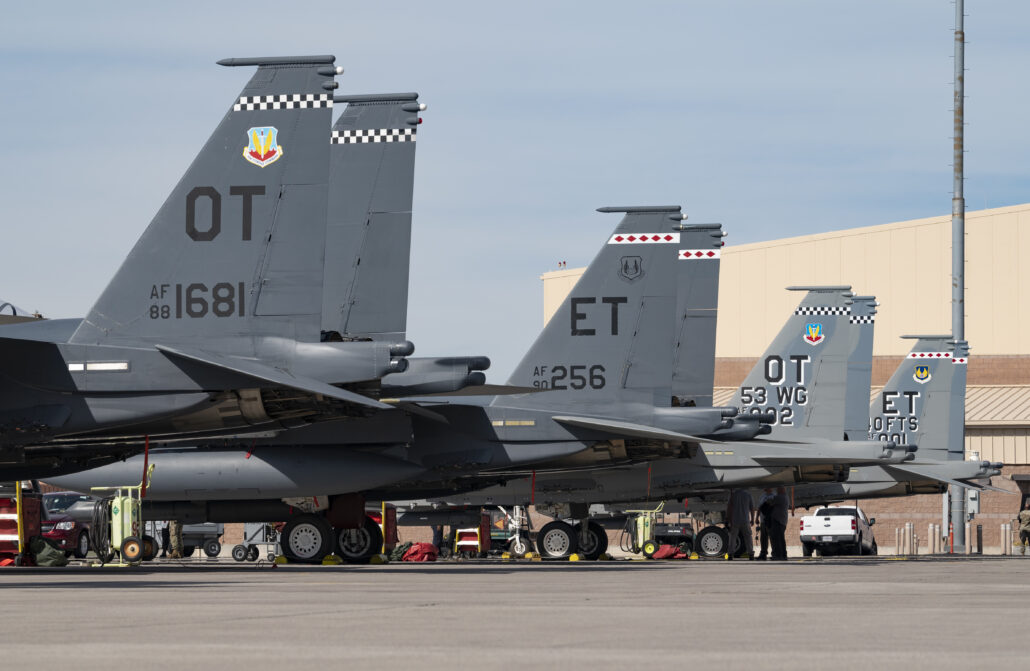
The official designation “Eagle II” was announced on April 7, 2021. The FY2021 defense appropriations bill allocated $1.23 billion for the procurement of 12 F-15EX aircraft, bringing the total orders to 20. By May 2022, the USAF had placed orders for 144 F-15EXs, but there were proposals to reduce the total to 80. The first operational F-15EXs were not equipped with conformal fuel tanks. The proposed budget for fiscal year 2024 included funds to purchase an additional 24 F-15EXs, potentially increasing the planned fleet to 104 aircraft. On April 18, 2023, the USAF announced that the California and Louisiana Air National Guards would replace their F-15C/D fleets with the F-15EX. On May 25, 2023, it was disclosed that the 173rd Fighter Wing at Kingsley Field ANGB, Oregon, would transition to being a Formal Training Unit (FTU) for the F-35A rather than the F-15EX. Basic F-15 training, encompassing both the F-15E and F-15EX, was slated to occur at Seymour Johnson AFB, North Carolina, starting in 2026.
F-15EX Renewed Interest in the Boeing Fighter
Nov 15th, 2023
Boeing is set to conduct the maiden flight of the third F-15EX Eagle II development aircraft for the U.S. Air Force, having unveiled the fighter at its St. Louis facility in August. This milestone comes more than two years after the initial two F-15EXs were delivered to the U.S. Air Force in early 2021 for testing.
While Boeing acknowledged that supply chain challenges contributed to the delay, the primary factor was the urgent nature of the USAF’s program. The first two aircraft, EX-1 and EX-2, were originally Advanced Eagle airframes designated for Qatar but were reassigned to the U.S. Air Force to expedite testing.
During this interim period, Boeing implemented a substantial update to its manufacturing process, incorporating a digital redesign of the F-15’s forward fuselage. The third aircraft, EX-3, marks the debut of this new design, now the standard for all future production. This redesign streamlines production, incorporating more extensive use of robotics.
Leveraging the wealth of experience gained from earlier F-15 versions, the F-15EX is the first U.S. Air Force aircraft to undergo concurrent developmental and operational test and evaluation (DT&E/OT&E). The first two aircraft have completed the Initial OT&E Phase 1, with the next four assigned to trial duties. EX-3/4 is slated to join the fleet this year, while the first two operational aircraft (EX-7/8) are scheduled for handover to the Air National Guard at an undisclosed time.
Boeing is currently contracted for Lots 1-4, with Lot 5 on the horizon. The planned Air Force procurement involves 104 aircraft across six Lots, although this remains tentative. The current production rate stands at 1.5 aircraft per month, with plans to increase to two per month by 2025, aiming to complete production of the 104 aircraft by 2028.
The F-15EX closely follows the Advanced Eagle models acquired by Saudi Arabia (F-15SA) and Qatar (F-15QA), incorporating iterative enhancements such as General Electric F110-GE-129 engines, ALQ-82(V)1 AESA radar, a 10- by 19-inch large-area display in the cockpit, and the capacity to carry up to 12 air-to-air missiles or 15 tonnes of ordnance.
Noteworthy features include a digital fly-by-wire flight control system, alleviating previous constraints on asymmetric loads and cross-control maneuvers. The aircraft’s capabilities, demonstrated through a dazzling flying display at the Dubai Airshow, include power and maneuverability, with a restriction on airframe load to 9Gs and speed to Mach 2.5 (although capable of exceeding both in extreme situations).
A key element of the F-15EX is the BAE Systems ALQ-250 Eagle Passive Active Warning Survivability System (EPAWSS), representing a significant improvement in the system’s adaptability to emerging threats. EPAWSS is in the final stages of development, with an export-optimized version also in progress.
The F-15EX has garnered considerable interest, with existing legacy Eagle customers expressing interest in new-build aircraft or incorporating elements of the EX/Advanced Eagle for extensive modernization programs. Israel has expressed intentions to procure new F-15EXs, although discussions are currently on hold due to the Gaza crisis. The F-15EX has sparked fresh interest from several other nations, including Indonesia, which signed a memorandum of understanding with Boeing for a potential acquisition of 24 aircraft in August. Poland has also initiated discussions regarding a possible acquisition of 32 aircraft.
USAF F-15EX completes first flight
ST. LOUIS, MO, UNITED STATES
02.10.2021
Story by Senior Master Sgt. Jennifer Shirar
173rd Fighter Wing/Public Affairs
The first F-15EX destined to the United States Air Force completed its initial flight in Saint Louis on February 2, 2021. The fighter jet took off and landed from St. Louis-Lambert International Airport.
It was announced in August 2020 that the 173rd Fighter Wing will begin transitioning as the F-15EX formal training unit in 2024.
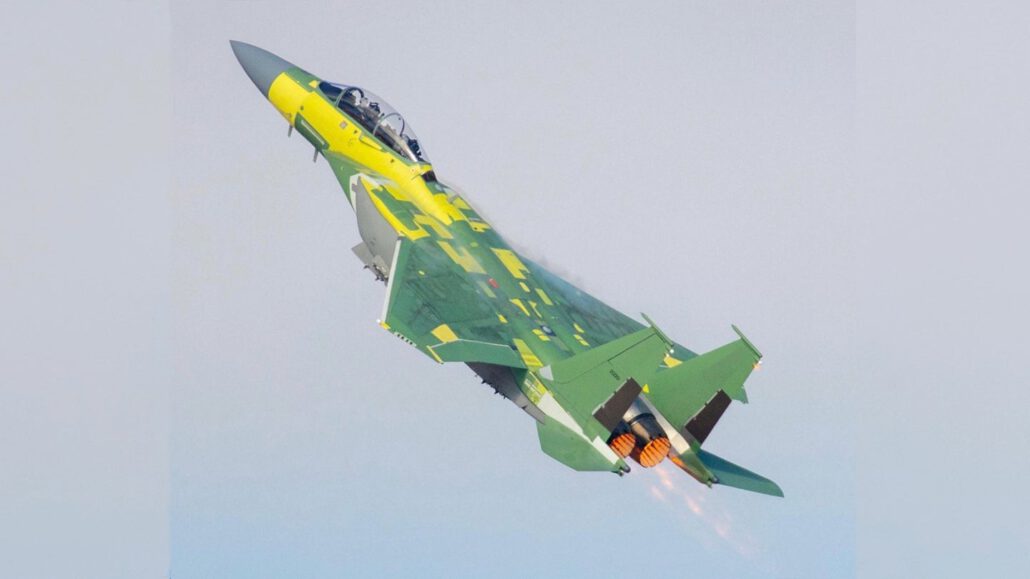
“Being selected as the F-15EX formal training unit is an outstanding mission for the 173rd Fighter Wing,” said Col. Jeff Edwards, 173rd FW commander. “Kingsley is simply an outstanding place to train pilots. The community support is just incredible, and we have some of the best training airspace anywhere. We have a culture of fighter training—we have been in the training business for over 3 decades, in the F-4, F-16, F-15C, and now soon to be F-15EX”.
The latest iteration of the F-15 Eagle Mission Design Series, the F-15EX features an increased payload capacity, fly-by-wire controls, a digital cockpit, modernized sensors, radars, and electronic warfare capabilities.
Edwards notes the long service life of the F-15EX airframe–20,000 flight hours. “That’s a long time, about double the service the life of an F-15C,”said Edwards. “Not only is the airframe designed to last for a long time, the F-15EX also has an ‘Open Mission System’ which allows the computer and avionics software to be more adaptable and more easily updated in the future. This adaptability is key, as we know that technology is continuing to accelerate.”
When asked about what it was like watching the first F-15EX flight, Edwards says he was very impressed. “Of course, I’m a big fan of the Eagle, so it’s not difficult for me to get excited about seeing the first F-15EX flight! Seeing the F-15EX fly for the first time really left me thinking: ‘Wow! We are going to be flying that jet soon at Kingsley, and it’s going to be awesome!’”
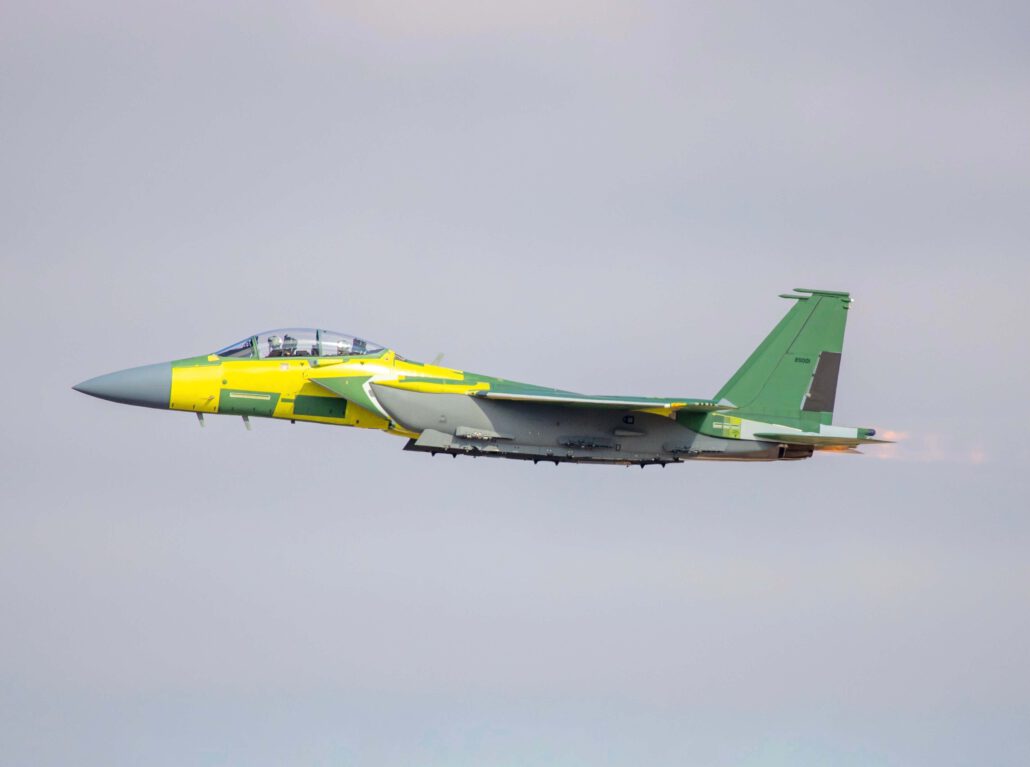
Edwards adds that there is a lot to do as the unit prepares to accept the F-15EX aircraft in 2024. “We will be in a transition period over the next several years, as we train F-15C pilots while also preparing for F-15EX; while this will be a challenging time, we know that we’ve got a fantastic community supporting us and an outstanding team here at the 173rd Fighter Wing.”
That team is being led by Lt. Col. Nick Huet, the 173rd FW F-15EX conversion officer. “Ultimately, it’s very rewarding to have the opportunity to work on behalf of our Wing to help secure a long-lasting mission for Kingsley and all the folks that call this base home,” said Huet.
“Lt. Col. Huet is an outstanding planner, strategic thinker, and instructor pilot,” said Edwards. “As we transition to the F-15EX, it was important to select an officer who had a vision for where we needed to go to be ready for F-15EX—Lt. Col. Huet has that vision.”
Prior to this position, Huet has held many roles including Director of Operations, USAF Weapons School Graduate, F-22 Instructor Pilot, and an F-15C Instructor Pilot.
“I work with designated representatives from all groups within the wing and together we navigate the conversion process,” said Huet. “As the first base to receive the F-15EX, our conversion will set the standard for all bases to follow – my game plan is for Kingsley to establish a bed down model that no other wing will be able to match!”
During the first F-15EX flight, the aircraft was piloted by Matt Giese, chief test pilot of the Boeing F-15, who checked the avionics, advanced systems, and software.
Proving again that the “Eagle Drivers” come from a small community, Edwards and Giese go way back. “Matt and I were in the same cadet squadron at the Air Force Academy,” said Edwards. “It’s awesome to see him flying the F-15EX and being on the leading edge of the future of the Eagle.”
Two F-15EX fighters should be delivered to Eglin Air Force Base by the end of the first quarter of 2021. Eight pre-production aircraft were ordered in July 2020, to allow the military and the manufacturer to test and fully define their applications. The USAF plans to eventually acquire at least 144 F-15EX fighters.
“The F-15EX will secure the future of Kingsley for many more years,” adds Edwards.
